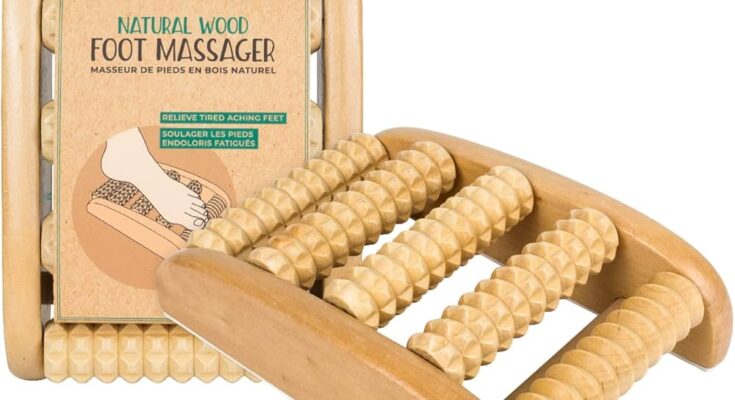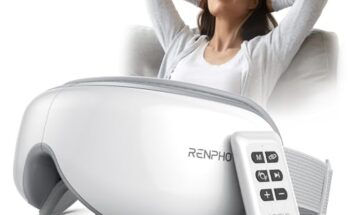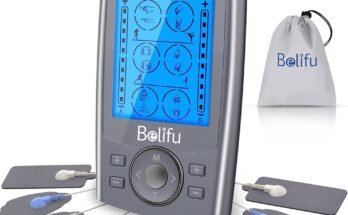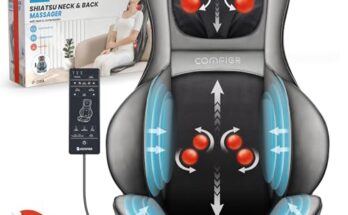Foot massages are more than just relaxation. They target specific pressure points.
These points can affect overall health and well-being. Understanding which pressure points are targeted can enhance the benefits of a foot massage. Knowing this helps you appreciate the ancient practice of reflexology. Reflexology links certain areas of the foot to other parts of the body.
By applying pressure to these points, various ailments can be addressed. This practice has roots in ancient Chinese and Egyptian cultures. It offers a natural way to relieve stress, pain, and tension. In this post, we will explore the key pressure points targeted during a foot massage. This knowledge can help you make the most of your next massage session.
Introduction To Foot Massage
Foot massage has a long history and is popular worldwide. Many believe it helps with relaxation and pain relief. It involves pressing specific points on the feet. These points are called pressure points. They are thought to connect to different parts of the body.
Benefits Of Foot Massage
Foot massage has several benefits. It can help improve blood circulation. Better circulation means more oxygen reaches your cells. This can lead to better overall health. Foot massage can also reduce stress. It helps calm the mind. Many people feel more relaxed and happier after a foot massage.
Another benefit is pain relief. Pressing certain points can help reduce foot pain. It can also help with headaches and back pain. Some believe it boosts the immune system. This means you might get sick less often. Here is a table of key benefits:
| Benefit | Description |
|---|---|
| Improved Circulation | More oxygen reaches cells |
| Stress Reduction | Calms the mind |
| Pain Relief | Reduces headaches and foot pain |
| Boosted Immunity | May reduce frequency of illness |
Historical Background
Foot massage has a rich history. It dates back thousands of years. Ancient Egyptians and Chinese used foot massage. They believed it had healing powers. They mapped out pressure points on the feet. Each point connected to a different body part. They called this practice reflexology.
In the 20th century, reflexology gained attention in the West. Dr. William Fitzgerald introduced it to the United States. He believed pressing certain points could relieve pain. Eunice Ingham further developed his work. She created detailed maps of foot pressure points. These maps are still used today.
Today, foot massage is common in many cultures. People use it for relaxation and health benefits. It is often included in spa treatments. Many also practice it at home. Foot massage is simple but powerful. It connects the ancient past with modern wellness.
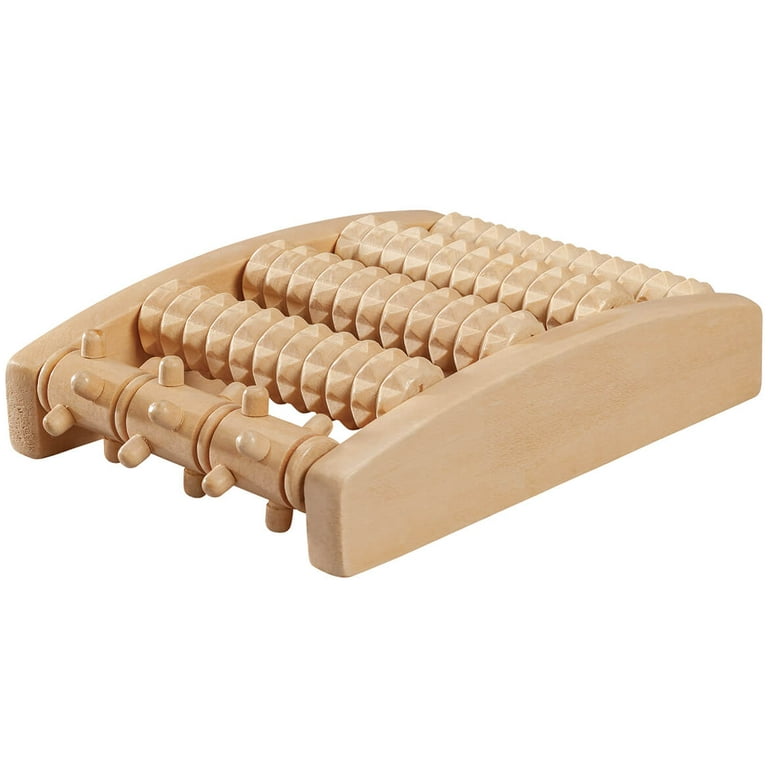
Credit: www.walmart.com
Understanding Pressure Points
Understanding pressure points can enhance the benefits of a foot massage. These specific areas on the foot connect to various parts of the body. Massaging them can help alleviate pain, improve circulation, and promote relaxation. Let’s delve deeper into what pressure points are and how they work.
What Are Pressure Points?
Pressure points are sensitive areas on the body. They can be manipulated for therapeutic benefits. Each point corresponds to different organs and systems. In foot massage, pressing these points can relieve tension in other body parts.
How They Work
Pressure points work through the nervous system. When a point is pressed, it sends signals to the brain. This can trigger the release of endorphins. Endorphins are natural painkillers. They help reduce pain and create a sense of well-being.
Stimulating pressure points can also improve blood flow. Better circulation helps deliver oxygen and nutrients to cells. This can speed up healing and reduce inflammation.
Key Pressure Points In The Foot
A foot massage can be very soothing. It targets specific pressure points which can relieve stress and pain. Knowing these points can help you or your therapist to provide a more effective massage.
Big Toe Area
The big toe is more than a digit. It connects to several key areas of the body. Massaging the base of the big toe can relieve headaches. The top of the big toe connects to the brain. This means gentle pressure here can improve mental clarity.
In the big toe, there are also connections to the neck. Pressing this area can help with neck pain. It may also ease throat discomfort. A table below shows the benefits of massaging the big toe area:
| Pressure Point | Body Connection | Potential Benefit |
|---|---|---|
| Base of Big Toe | Head | Relieves headaches |
| Top of Big Toe | Brain | Improves mental clarity |
| Sides of Big Toe | Neck | Eases neck pain |
Ball Of The Foot
The ball of the foot is another important area. It connects to the chest and lungs. Pressing this point can help with breathing issues. It may also relieve chest tension. The ball of the foot also connects to the heart. Massaging this area can improve circulation.
This part of the foot has many nerve endings. A gentle massage can reduce stress. It can also improve overall well-being. Here’s a summary of the benefits of massaging the ball of the foot:
- Helps with breathing issues
- Relieves chest tension
- Improves circulation
- Reduces stress

Credit: www.amazon.com
Toe Pressure Points
Foot massages are a great way to relax and heal the body. The toes, in particular, are home to several important pressure points. These points can help relieve stress, improve circulation, and even alleviate certain ailments. Understanding these toe pressure points can enhance the benefits of your foot massage.
Tips Of The Toes
The tips of your toes hold significant pressure points. Massaging these areas can provide several benefits:
- Improves mental clarity: Stimulating the tips can help clear the mind.
- Relieves headaches: Gentle pressure can reduce headache symptoms.
- Boosts energy levels: Massaging toe tips can invigorate your body.
To massage the tips of your toes effectively:
- Sit in a comfortable position.
- Use your thumb and index finger to gently press the tips.
- Apply circular motions for 1-2 minutes on each toe.
Base Of The Toes
The base of the toes also contains crucial pressure points. This area connects to various body parts:
| Toe | Connected Body Part |
|---|---|
| Big Toe | Brain and Head |
| Second Toe | Eyes |
| Middle Toe | Liver |
| Fourth Toe | Gallbladder |
| Little Toe | Kidneys |
Massaging the base of the toes can help:
- Enhance vision: Stimulating the second toe base can aid eye health.
- Improve liver function: The middle toe base can support liver health.
- Boost kidney function: Pressing the little toe base can aid kidney health.
To massage the base of your toes:
- Sit comfortably with your foot accessible.
- Use your thumb to apply firm pressure to the base.
- Massage each toe base for 1-2 minutes.
Arch Of The Foot
The arch of the foot plays a crucial role in maintaining balance and absorbing shock. Massaging this area can relieve pain and improve flexibility. The arch has two main sections: the inner arch and the outer arch.
Inner Arch
The inner arch is the raised area along the inside of your foot. This section supports most of your body weight. During a massage, applying pressure here can reduce tension and alleviate foot pain.
Key pressure points in the inner arch include:
- Soleus Muscle: Helps with calf tightness.
- Plantar Fascia: Reduces inflammation and heel pain.
Outer Arch
The outer arch runs along the outside of your foot. While it bears less weight, it is equally important for stability. Massaging this area can help with balance and ease foot fatigue.
Important pressure points in the outer arch include:
- Peroneus Longus: Supports ankle strength.
- Calcaneocuboid Ligament: Aids in foot flexibility.

Credit: www.healthline.com
Heel Pressure Points
Heel pressure points play a vital role in foot massage. The heel, a crucial part of the foot, bears much body weight. Massaging heel pressure points can relieve tension and improve overall well-being. Different areas of the heel target various pain points.
Central Heel
The central heel pressure point is located in the middle of the heel. Massaging this area can help with lower back pain. It can also ease stress and improve sleep quality. Gently press and knead the central heel to experience relief.
Outer Heel
The outer heel pressure point lies on the outer edge of the heel. This point connects with the sciatic nerve. Massaging the outer heel can alleviate sciatica pain. It can also reduce discomfort in the hips and legs. Use firm pressure to massage the outer heel for best results.
Ankle Pressure Points
Foot massages are not only relaxing but also have numerous health benefits. One of the most significant aspects of a foot massage is targeting specific pressure points. These points can help alleviate pain and improve overall well-being. The ankle area, in particular, has several crucial pressure points that can be highly effective.
Inner Ankle
The inner ankle is home to several important pressure points. One of the key points is the Kidney 3 (K3) point. This point is located between the Achilles tendon and the inner anklebone. Applying pressure here can help with fatigue, insomnia, and lower back pain.
Another critical point is the Spleen 6 (SP6). This point is about four finger-widths above the inner anklebone. It is known to help with digestive issues, menstrual cramps, and stress relief.
To target these points:
- Use your thumb to apply gentle pressure.
- Massage in a circular motion for about 3-5 minutes.
- Adjust pressure based on comfort level.
Outer Ankle
The outer ankle also has significant pressure points. One notable point is the Gallbladder 40 (GB40). This point is located in the depression in front of and below the outer anklebone. Pressing this point can help with sciatica, hip pain, and muscle stiffness.
Another essential point is the Bladder 62 (BL62). This point is found just below the outer anklebone. It is beneficial for treating headaches, dizziness, and anxiety.
To stimulate these points:
- Press with your thumb or a massage tool.
- Use firm but gentle pressure.
- Massage for 2-4 minutes, focusing on any tender areas.
Incorporating these ankle pressure points into your foot massage routine can enhance its effectiveness. Not only do they help with specific ailments, but they also contribute to overall relaxation and well-being.
Techniques For Targeting Pressure Points
Targeting pressure points during a foot massage can relieve stress and pain. Using specific techniques, massage therapists can effectively address these points. Let’s explore two common methods: Thumb Walking and Rotational Movements.
Thumb Walking
Thumb walking is a technique used to apply gentle, steady pressure on the foot. This method involves using the thumbs to “walk” along the foot’s surface. The goal is to stimulate specific pressure points.
- Start at the base of the foot.
- Use your thumb to apply pressure.
- Move in a straight line towards the toes.
- Repeat the process several times.
Thumb walking can be used on various parts of the foot. It helps to improve blood circulation and reduce tension.
Rotational Movements
Rotational movements involve using the hands to rotate specific areas of the foot. This technique helps in loosening tight muscles and relieving pain.
- Hold the foot with both hands.
- Use your fingers to apply pressure to a pressure point.
- Make small, circular motions with your fingers.
- Continue this movement for about 30 seconds.
Rotational movements are particularly effective on the heels and balls of the feet. They can help in alleviating discomfort and improving flexibility.
Precautions And Tips
Understanding the precautions and tips for foot massage can enhance the experience and ensure safety. Not everyone should receive a foot massage, and there are ways to make the massage more effective.
When To Avoid Foot Massage
Foot massage is not suitable for everyone. Avoid foot massage if you have open sores, infections, or fractures. Those with severe circulatory issues should also avoid it. Pregnant women should consult their doctor before having a foot massage. If you feel pain during the massage, stop immediately.
Enhancing The Experience
Use warm oil or lotion to make the massage smoother. Start with gentle pressure and gradually increase it. Focus on one area at a time for a more thorough massage. Communicate with the person receiving the massage. Ask about their comfort and preferences. Consider using aromatic oils for relaxation.
Frequently Asked Questions
What Are The Main Foot Pressure Points?
The main foot pressure points include the heel, arch, ball, and toes. These areas are targeted to relieve stress, pain, and improve circulation.
How Does Foot Massage Help With Relaxation?
Foot massage stimulates nerves and improves blood flow. This helps to release tension and promote relaxation throughout the body.
Can Foot Massage Improve Overall Health?
Yes, foot massage can improve overall health. It boosts circulation, reduces stress, and can alleviate pain in other parts of the body.
What Is The Role Of The Arch In Foot Massage?
The arch contains reflex points connected to various organs. Massaging the arch can help improve organ function and overall wellness.
Conclusion
Understanding foot massage pressure points can enhance your relaxation experience. Targeting these points can relieve stress and improve circulation. Regular foot massages contribute to overall well-being. Explore different techniques to discover what works best for you. Remember, consistency is key.
Enjoy the soothing benefits of foot massages in your routine. Your feet will thank you.
